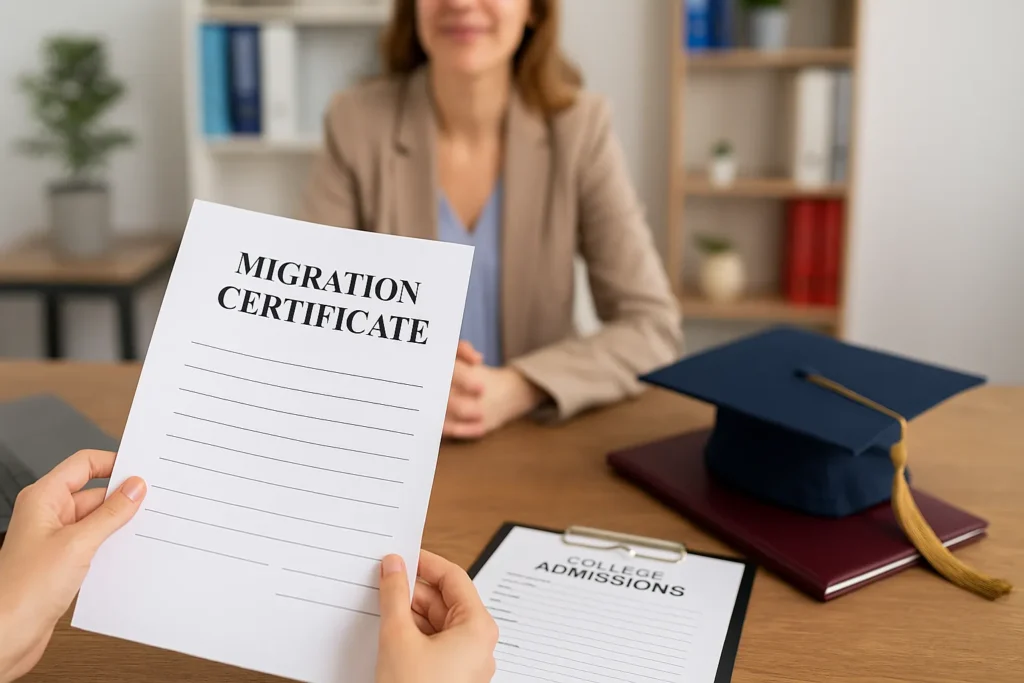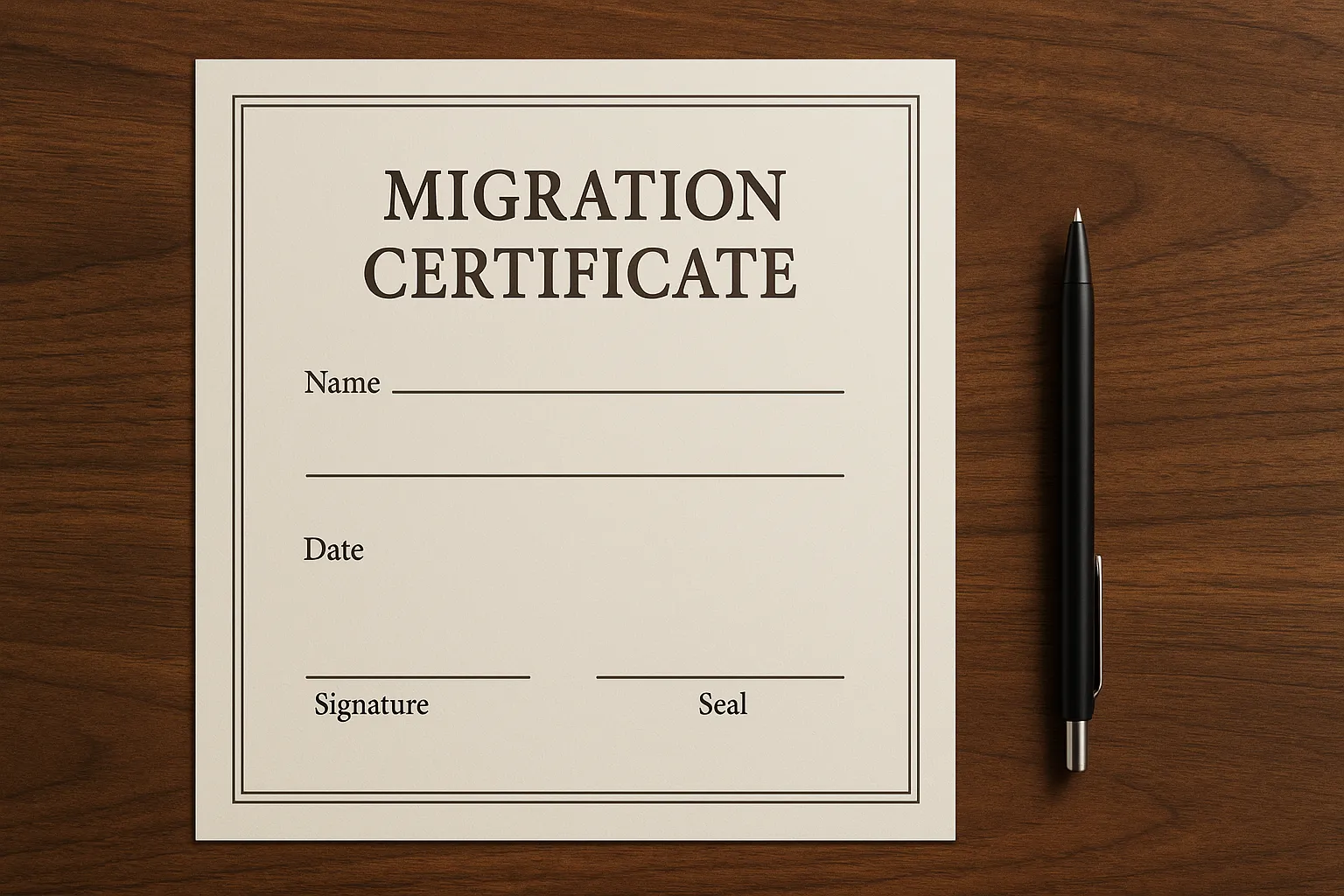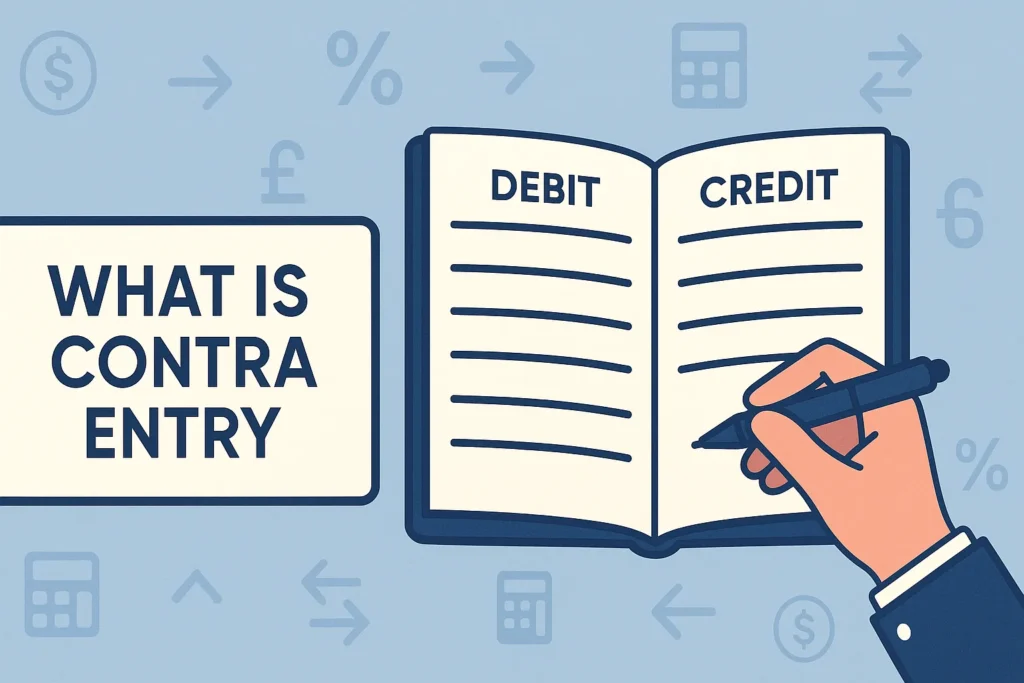Switching boards or universities? Moving to a new place for higher studies? That’s where a migration certificate enters the picture. But what exactly is it, and why do students need it? Whether you’re in school, college, or a parent trying to understand the paperwork your child needs, this guide will simplify it for you. Let’s dive into the world of migration certificates and decode everything step-by-step in the most natural and easy-to-understand way.
Migration Certificate Meaning: What Does It Actually Mean?
Let’s start with the basics. A migration certificate is an official document issued by your current educational board or university that states you’ve formally left that institution and are now eligible to join another. Think of it as a “No Objection Certificate” that says, “Hey, this student has completed their studies with us and is free to go elsewhere.”
It’s not the same as your marksheet or transfer certificate. A migration certificate specifically deals with board or university changes, usually when a student is moving from one board or university to another.
What is Migration Certificate After 12th?
Here’s where most students and parents start asking questions. So, what is migration certificate after 12th? It’s the certificate issued by your school board (like CBSE, ICSE, or State Board) after you pass Class 12, allowing you to enroll in a college or university under a different education board or system.
For instance, if you studied under CBSE in school and are now planning to pursue a degree at a university affiliated with a state board or a different national board, you’ll need this certificate. Without it, most colleges or universities won’t allow admission, because they need a formal declaration that you’re not already enrolled elsewhere under the same system.
What is Migration Certificate for Class 10?
The Class 10 version is quite similar in concept. So, what is migration certificate for class 10? It is issued after you clear your board exams in Class 10 and plan to join a different education board in Class 11.
Let’s say you completed your Class 10 under a State Board and now want to move to a CBSE school for Class 11. You’ll need to present a migration certificate from your original board when applying to the new school.
Again, the purpose is the same, to ensure smooth academic transitions without duplications or conflicts between education boards.
What is the Use of Migration Certificate?

You might be wondering, if I already have my marksheets and transfer certificate, what is the use of migration certificate? Great question.
Here’s how it matters:
- Board/University Shift: If you’re changing boards after 10th or 12th, or switching universities during your college years, this certificate is mandatory.
- College Admissions: Many colleges clearly state that they require a migration certificate for enrollment, especially if your previous education was from a different board.
- Avoiding Duplicate Enrollments: It prevents a student from being registered under two institutions at once, which can be a legal or administrative issue.
- Future Verification: Some government jobs or educational programs may ask for a migration certificate as part of your document verification process.
So in simple terms, it’s a must-have document when you’re planning to change your educational institution across boards or states.
What is the Procedure to Get Migration Certificate?
Now that you know why it’s important, let’s talk about what is the procedure to get migration certificate. The process is pretty straightforward but can vary slightly depending on your board or university.
Here’s a general step-by-step:
- Collect Necessary Documents: Usually includes your final marksheet, school leaving certificate, and identity proof. Some boards may also ask for a copy of your admit card.
- Fill Out Application Form: You can do this online or offline, depending on the institution. The form is available on most board/university websites.
- Pay the Required Fee: There’s usually a small processing fee. This varies — some boards charge ₹100–₹500.
- Submit the Form and Documents: Submit them at your school or the board’s office. Some institutions also accept courier/postal applications.
- Track and Receive Certificate: Most migration certificates are issued within 7–15 working days, either in-person, by post, or via download.
Quick Tip: Some universities like Delhi University and state boards have a simple online process, so do check the latest updates on the official site of your education board.
Things to Remember While Applying
Here are a few things to keep in mind while applying for your migration certificate:
- Always keep multiple photocopies once received.
- Double-check your name, roll number, and board/university details before submitting the form.
- If you’re applying for higher studies abroad, get your certificate attested or apostilled if needed.
- If lost, you can apply for a duplicate migration certificate with an affidavit.
Is It Required in College Transfers Too?
Yes, it is. If you’re transferring from one university to another, let’s say, from Mumbai University to Delhi University, a migration certificate is compulsory. This applies whether you’re in your first year of undergrad or switching universities mid-course.
This is similar to changing your board after Class 10 or 12 the university you are joining needs proof that you’ve formally exited the previous one.
Related Topics You Might Find Useful
If you’re exploring your education journey and have questions about future career paths, you might want to check these out:
- How to Become a Lawyer After 12th
- How to Join Merchant Navy
- How to Become a Cardiologist
- How to Become a Teacher in India
- How to Join NCC
Final Thoughts
So now that you know what is migration certificate, it’s easy to see why it’s such a critical document, especially when changing boards or universities. Whether you’re applying after Class 10, 12, or during your college life, make sure you follow the correct procedure and keep the certificate safely for future use. It’s one of those behind-the-scenes documents that help your academic journey go smooth, and now you’ve got it all figured out. If you’re hungry for more educational clarity, keep exploring. There’s always something new to learn.





